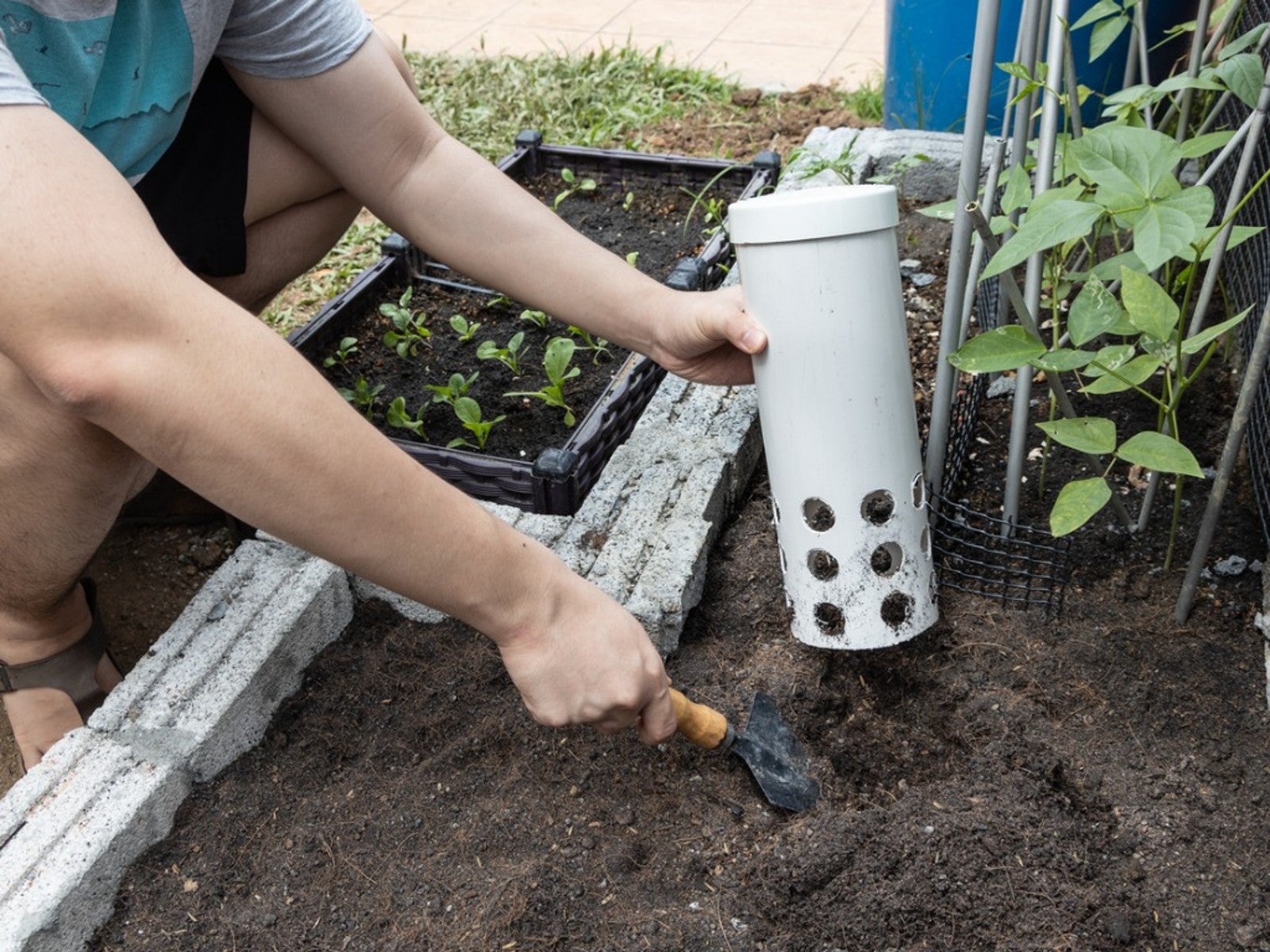
Vermicompost is the process of converting organic waste into nutrient rich humus through the use of earthworms. The newest incarnation of this process is the worm tower. A worm compost tower is similar to an enclosed worm farm but with the tower placed directly into the garden. You can purchase a compost tower or make your own DIY worm compost tower.
About Worm Tower Composting
A vermicomposting tower is a terrific way to get to a zero waste household. Not only do the worms clean up your organic waste but they leave behind nutrient rich castings in the soil.
Sounds like a win/win right? Well in a perfect world, it is. But the reality is that you need to pay attention to the type of worm used, the size of your worm tower, venting heat yet keeping water out of the compost tower, and using safe materials that don’t leach hazardous toxins into the soil.
Compost Tower Materials
A vermicomposting tower can be purchased, or you can build one yourself fairly easily. The choice of material you use depends on you and what you are concerned with. For instance PVC piping is often recommended for use when building a DIY worm compost tower however some people are concerned with leaching of vinyl chloride from the cut ends. Another option is ABS piping, however, it is made with BPA which may not be ideal either.
A food grade bucket will eliminate issues with BPA or other risky materials, or clay pipes can be used although they are difficult to cut into without cracking or shattering. Another option is to build your DIY worm compost tower out of wood.
DIY Worm Compost Tower
Whichever type of material you choose it must have a hole in both ends as well as alternating holes all around the tube. Next dig a hole in the ground or raised bed that is deep enough to accommodate the tube. Don’t dig too deep, about a foot or so (30 cm.); remember worms are surface creatures.
Place the compost tube in the hole and fill in the outside of the tube with soil. Place a layer of old leaves and food scraps into the bottom of the tube and cover the food with shredded paper, grass clippings, soil or dried leaves. Add the worms and cap off the tube with a PVC cap or a terra cotta plant pot.
Sign up for the Gardening Know How newsletter today and receive a free copy of our e-book "How to Grow Delicious Tomatoes".
Continue to add food scraps to the worm compost tube avoiding any meat, bones, dairy, citrus or oily food scraps.

Amy Grant has been gardening for 30 years and writing for 15. A professional chef and caterer, Amy's area of expertise is culinary gardening.
